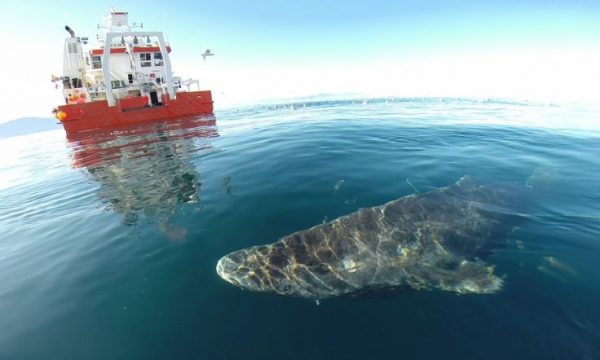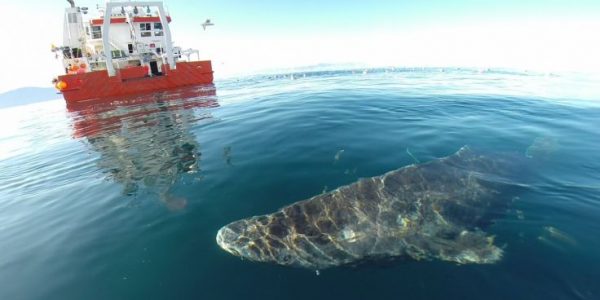
Although difficult to study and follow, Greenland Sharks have long been known to having a very long lifespan. But recent studies reveal that one of biggest living species of shark can live up to 400 years and maybe more.
A group of researchers found a Greenland Shark, which thanks to the eye lens radiocarbon were able to pinpoint his age at 392 years. 28 Sharks reviewed in the research were all female (bigger than the male in this species), and were all at least 272 years old. This makes the Greenland Shark the longest-living of all vertebrate species.
They used radiocarbon dating on the samples to determine the sharks age. Scientists have known since the 1950s that nuclear bomb tests leave permanent molecular marks on sea creatures. Bomb-related changes in an animal’s tissue can be seen as a sort of timestamp. But because these changes persist, even animals born after any given bomb can be marked by it if the animals they eat were alive during the test.
According to the published findings, the smaller of the tested sharks (less than 2.2 meters in length) showed signs of the radiocarbon bomb pulse, a time marker of the early 1960s. The age ranges of pre-bomb sharks revealed the age at sexual maturity to be at least 156 ± 22 years, and the largest animal (502 cm) to be 392 ± 120 years old. Greenland sharks were already estimated to live up to and maybe beyond 200 years, on a shark caught in 1952. The researchers estimate that the species reaches maturity at about 150 years of age.
Unfortunately, all 28 female sharks that the study was based on were fatally injured by the time they landed onboard—some by other sharks, and some by fishing equipment—and so all were euthanized. All were accidentally caught in fishing nets and scientists’ long lines between 2010 and 2013.
Greenland Sharks are difficult to observe, living deep in the waters of the Arctic ocean. It is an Apex Predator, feeding mostly on fish, but they do hunt seals, and are attracted by the smell of rotting meat in the water. Greenland sharks have also been found with remains of polar bears, horses, moose, and reindeer (in one case an entire reindeer body) in their stomachs. Scientists assume these sharks attack seals in their sleep, because it is among the slowest of sharks, with a top speed that’s about half that of a seal.
It has been observed at a depth of 2,200 m (7,200 ft) by a submersible investigating the wreck of the SS Central America. In August 2013, researchers from Florida State University caught the first documented Greenland shark in the Gulf of Mexico. The specimen was caught at a depth of 1,749 m (5,738 ft), where the water temperature was 4.1 °C (39.4 °F).[ A more typical depth for the species is above 1,200 m (3,900 ft). During the winter, when the sharks look for warmer waters to inhabit, they are often found at or near the surface of the water. They usually seek its preferable cold water (−0.6 to 12 °C or 30.9 to 53.6 °F) habitat.
It’s the second-largest carnivorous shark species in the world, behind the Pacific Sleeper Shark, which can grow up to 7 meters or more. They are preyed on by the offshore ecotype of killer whales off British Columbia.
